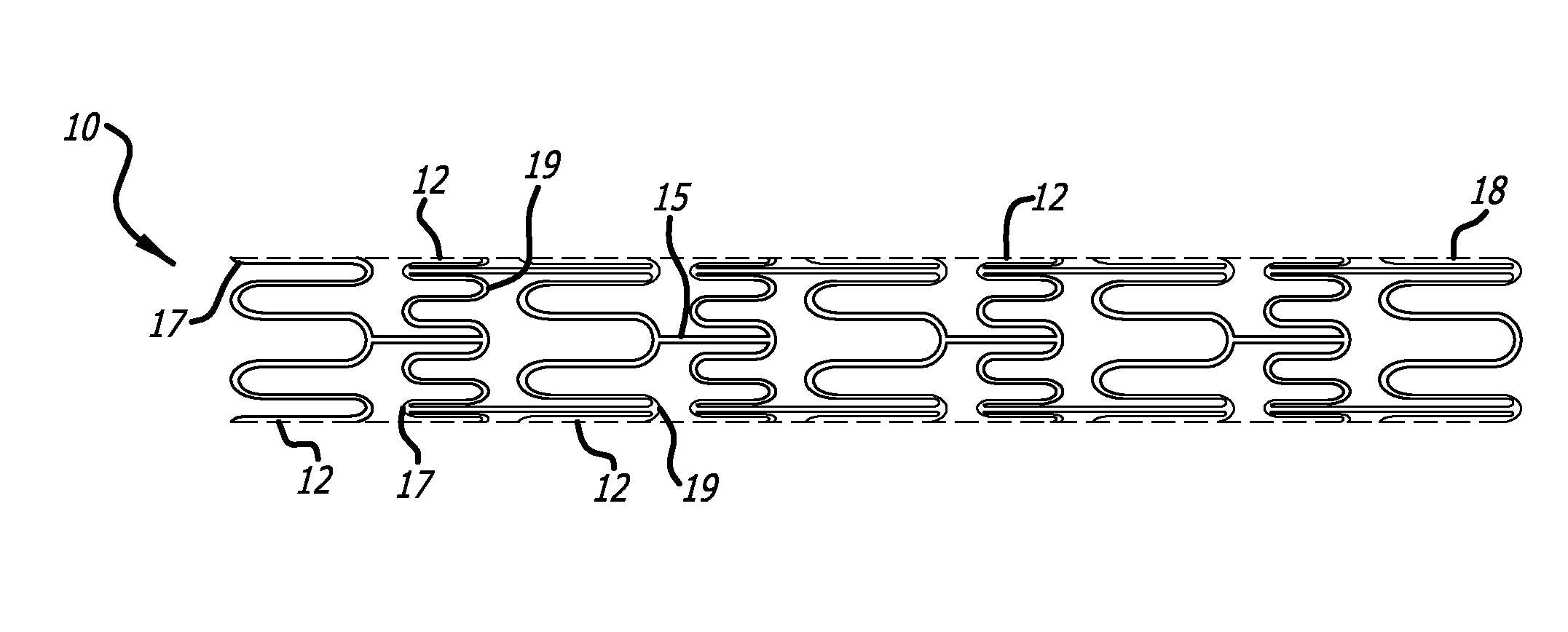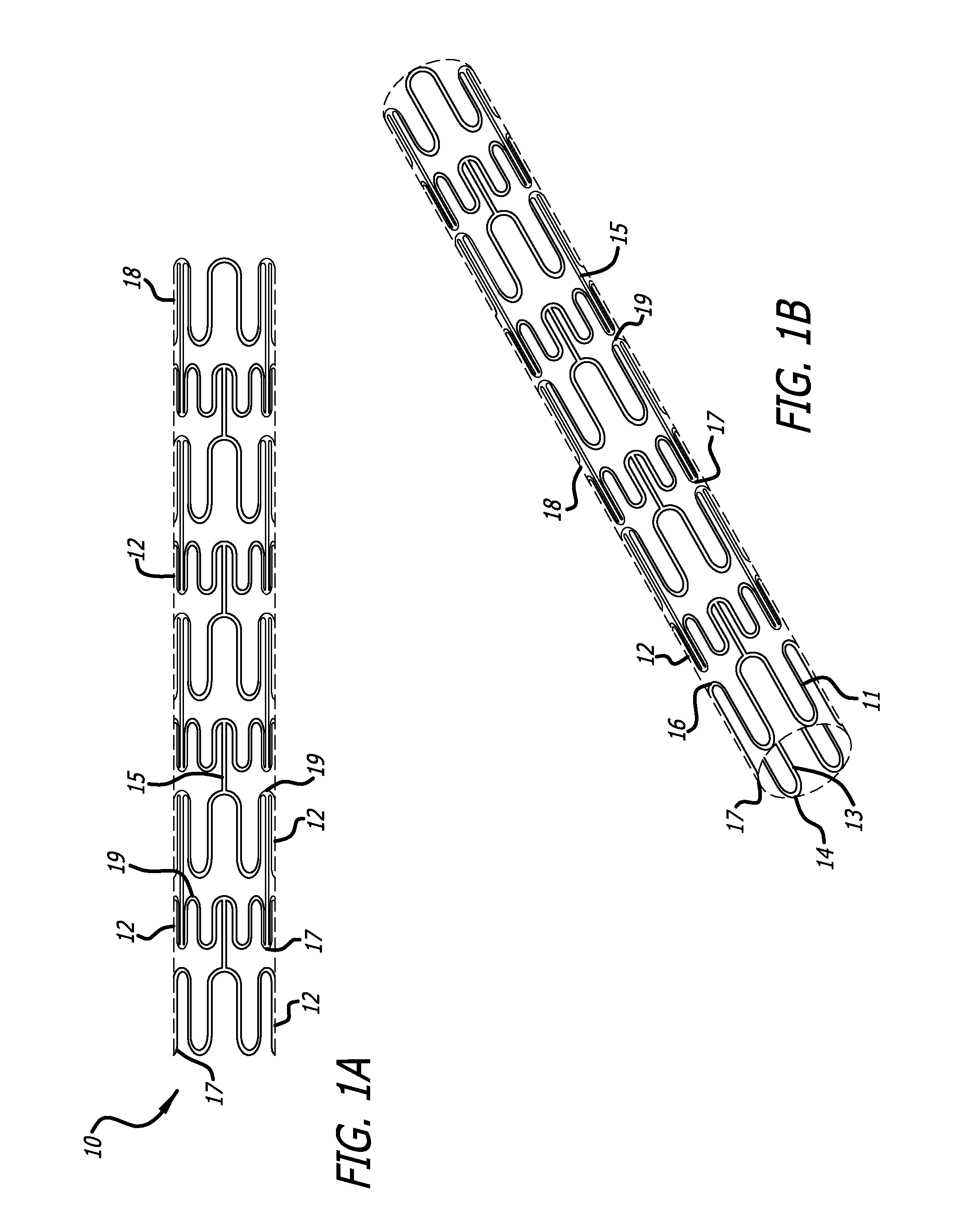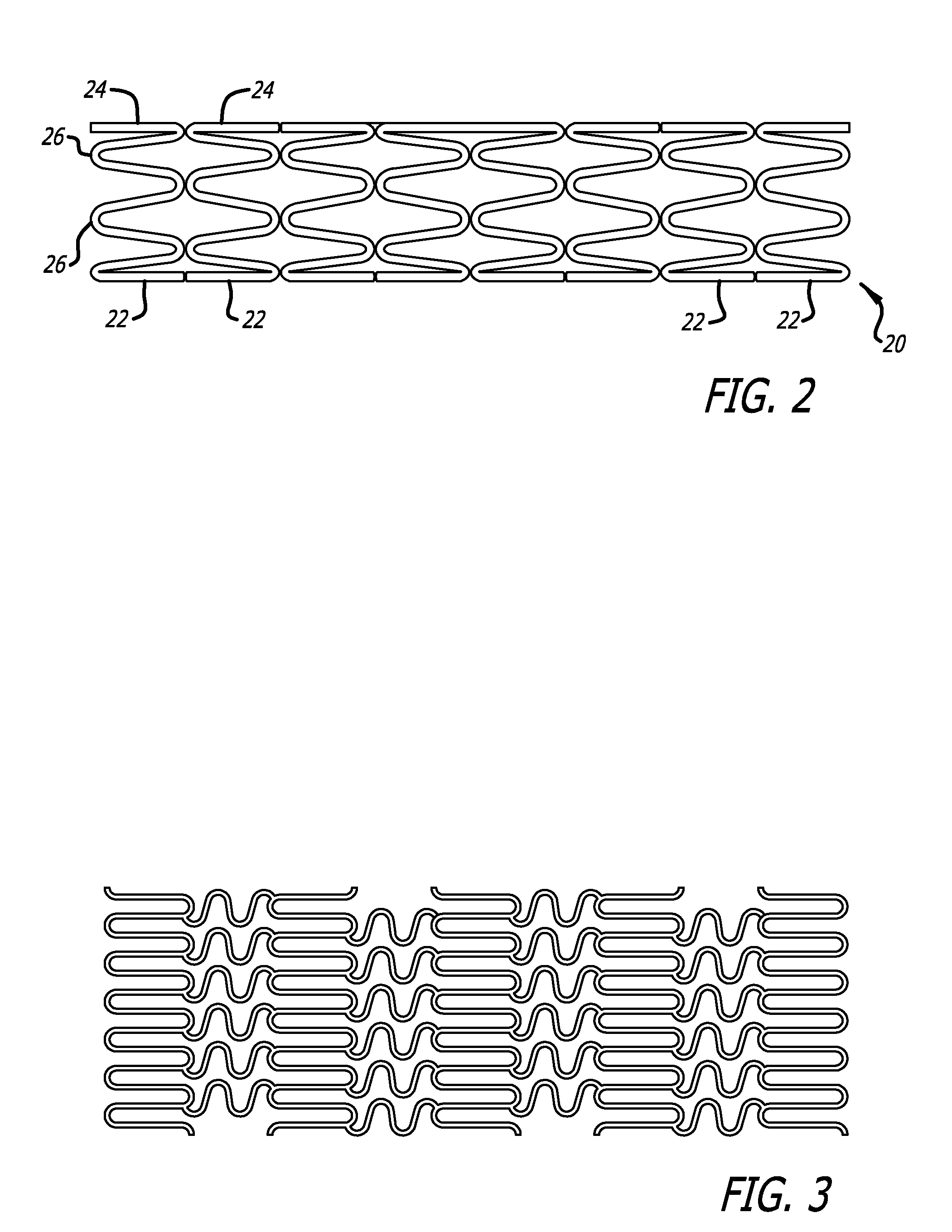Stent Combined with a Biological Scaffold Seeded With Endothelial Cells
- Summary
- Abstract
- Description
- Claims
- Application Information
AI Technical Summary
Benefits of technology
Problems solved by technology
Method used
Image
Examples
Embodiment Construction
[0028]Cardiovascular disease, including atherosclerosis, is the leading cause of death in the United States. One method for treating atherosclerosis is percutaneous transluminal coronary angioplasty (“PTCA”), commonly referred to as “angioplasty.” The objective of angioplasty is to enlarge the lumen of the affected coronary artery. Unfortunately, while affected arteries can be enlarged in this manner, they can, in some instances, restenose chronically, or close down acutely, negating the positive effect of the angioplasty procedure.
[0029]To address this issue, following angioplasty, stents are often positioned across the stenosis, and expanded to keep the passageway clear. In addition to providing structural support, stents have also been coated with various medications to minimize inflammation and provide treatment. Embodiments disclosed herein provide a stent with a biological scaffold seeded with endothelial cells. The stent provides structural support to maintain the openness of...
PUM
 Login to View More
Login to View More Abstract
Description
Claims
Application Information
 Login to View More
Login to View More - R&D
- Intellectual Property
- Life Sciences
- Materials
- Tech Scout
- Unparalleled Data Quality
- Higher Quality Content
- 60% Fewer Hallucinations
Browse by: Latest US Patents, China's latest patents, Technical Efficacy Thesaurus, Application Domain, Technology Topic, Popular Technical Reports.
© 2025 PatSnap. All rights reserved.Legal|Privacy policy|Modern Slavery Act Transparency Statement|Sitemap|About US| Contact US: help@patsnap.com



